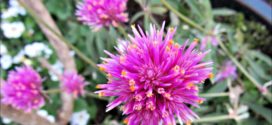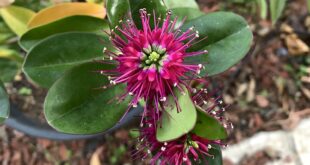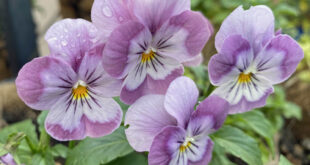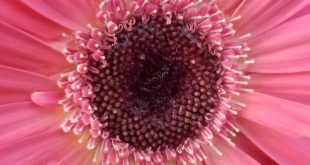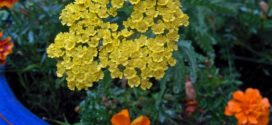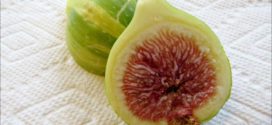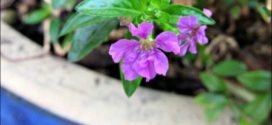Globe amaranth is a compact annual that typically grows 12-24” tall on upright branching stems. The true flowers are insignificant, tiny, white to yellow trumpets that are only visible close up. It is the bright magenta bracts arranged in globose, papery-textured, clover-like flowerheads that provide the real show in a long summer to frost bloom. Cultivars expand the range of …
Read More »admin
Hebe Speciosa
Hebe speciosa, its many cultivars and hybrids are very popular garden plants in area with suitably mild temperate climates. They appeal because of their lush evergreen foliage, showy flowerheads, long blooming season and ease of cultivation. They are used to form borders, low hedges, bushes and potted patios for patios and terraces. They are ideal for coastal gardens due to …
Read More »Violas
All Pansies are Violas but not all Violas are Pansies. The two words have become virtually interchangeable, but even though these plants share common origin, there are some differences that could determine which would make the most impact in your property’s landscaping. If the flower has four petals pointing upward and only one pointing downward – you’re looking at a …
Read More »Oleander Aphids
Anyone who raises milkweed in an effort to attract Monarch butterflies is familiar with the soft-bodied, squishy orange insects that seemingly take over anything in the Asclepias family. Before we explore how to kill them, let’s take a look at the interesting life cycle of these ubiquitous, annoying insects, known as oleander aphids, milkweed aphids, or by their Latin name, …
Read More »Gerbera Daisy
New to our Sunnyvale garden in 2020 are Gerbera daisy flowers. The blooms are large (4 inches across) and have a central disk that can be yellowish, light-bronze, or dark in color. This disk is surrounded by rays that come in a variety of colors. The colors are most commonly yellow, red, or orange. However, growers have also produced varieties …
Read More »Violetto Artichoke Plant
From the north of Italy, the artichoke of aristocrats. This choke has small oval slightly elongated head 3 inches wide by 5 inches long. mouthwatering flavor. Fruit is more elongated than the green globe type. The edible thistle first appeared in Italy and Sicily as early as 200-300 B.C. It may be a descendant of C. cardunculus, the wild cardoon …
Read More »Dried Hachiya Persimmons
During our Thanksgiving dinner at Shauna’s home, Linda and Brad mentioned that they had a lot of persimmons. I joked that they would ring our doorbell and leave a box of fruit. Linda corrected me: She wouldn’t ring the doorbell. They left us a box with 36 large Hachiya persimmons. Dehydrating persimmons is simple. Wash the fruit. Core the top …
Read More »Yarrow
Yarrow (Achillea spp.) adds bright spots of color to the garden in summer and fall. My mother has always had the tall yellow yarrow in her Almaden Valley garden. It complemented the blue and white flowers of Mexican Sage. The flower heads are large, flat-topped umbels packed with tiny flowers. This hardy, drought-resistant perennial still thrives with poor soil and …
Read More »Panache Fig
In spring 2016 my brother Adam came up from southern California with a 30-inch tall Panache Fig tree from his garden that he transplanted into a 10-gallon pot. The Panache Fig (aka Tiger Fig) has a yellow and green-striped skin with a strawberry-colored flesh. Unlike our Black Mission Fig, the Panache Fig does not have a spring crop. Because it …
Read More »Mexican Heather
Cuphea hyssopifolia, commonly called Mexican heather, is native from Mexico to Guatemala. It is a rounded, densely branched 1-2’ tall tropical sub-shrub. It produces quaint, small, trumpet-shaped flowers with six spreading lavender petals and green calyx tubes. Flowers appear singly in the leaf axils along stems crowded with lance-shaped glossy green leaves (to 3/4” long). Blooms profusely summer to frost. …
Read More »